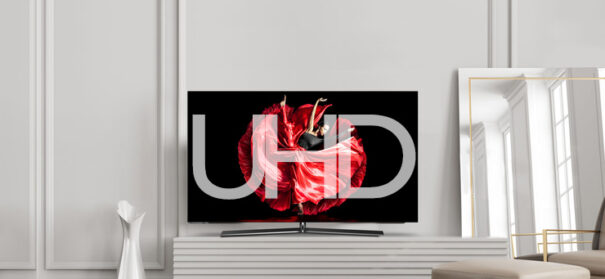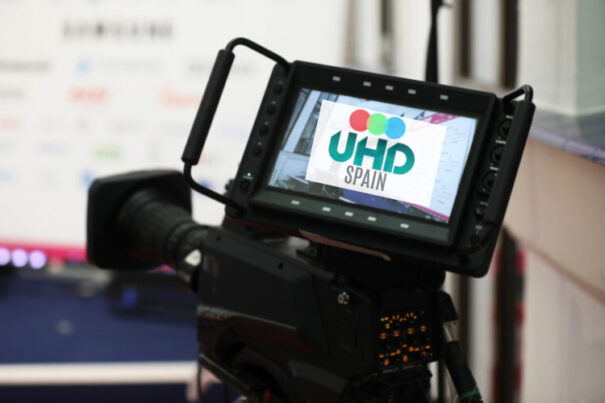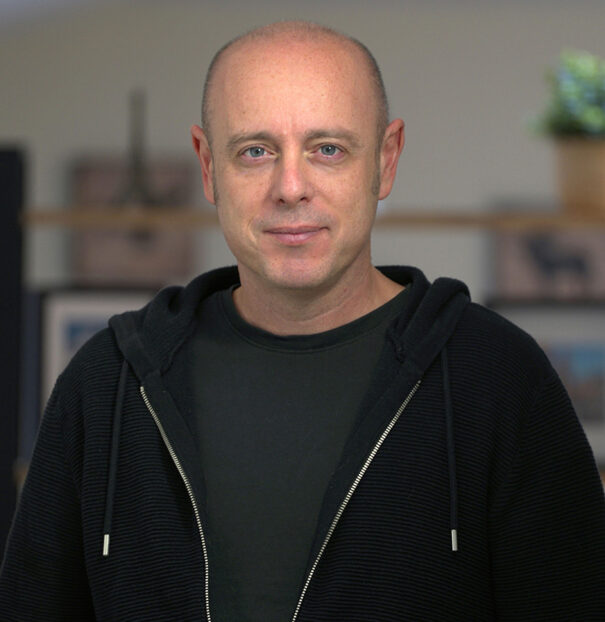UHD, an inevitable challenge: the issue of bandwidth and the coexistence of SDR and HDR
Xavier Bonet, realización en TV3, coordinador del grupo de postproducción de UHD Spain y responsable del departamento de tecnología de la CHESS, abre las puertas a dos interesantes desafíos que enfrentará la industria en su transformación al UHD: la cuestión del ancho de banda y la convivencia de material en SDR con HDR.
Desde los inicios de la industria audiovisual, se ha luchado por conseguir que la experiencia de usuario sea lo más realista e inmersiva posible, con la voluntad que el espectador se pueda aislar de su entorno real y adentrarse de pleno a la experiencia audiovisual. Para conseguir este objetivo, han sido muchos los esfuerzos y mejoras tecnológicas a lo largo de la historia, y ahora es el turno de la UHD.
Con el propósito de establecer un criterio único entre todos los operadores, dentro del Foro UHD Spain se está trabajando en la definición de la UHD, y se coincide en que únicamente un aumento en resolución no puede considerarse UHD. La mayor parte de los miembros del foro opinan que, para que un producto pueda ser considerado UHD, este debe contener todas las características técnicas, WCG, HFR y NGA, definidas en los estándares. Esto no significa que hasta que no se consiga una plena implementación de todos los conceptos vinculados a la UHD no se pueda lidiar con situaciones intermedias muy atractivas, como podría ser la señal HD en HDR.
Una idea importante de recordar, es que trabajar en UHD no significa que sistemáticamente se deba llevar las características a su máximo rendimiento. Por ejemplo, utilizar un espacio de color ampliado (WCG) no significa que no se pueda producir un audiovisual en blanco y negro, utilizar técnicas de audio inmersivo (NGA) no está reñido en producir en estéreo, o que por el hecho de utilizar una alta resolución temporal (HFR) no se pueda realizar una ficción a 25p. La tecnología debe estar al servicio de la creatividad, pero es importante clarificar los estándares tecnológicos para conseguir la máxima compatibilidad entre sistemas.
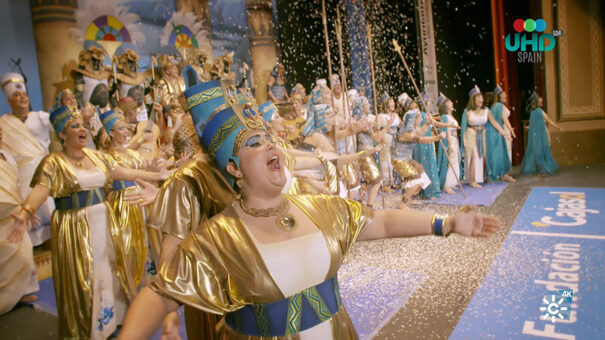
La repercusión del ancho de banda
Pero el gran reto al implementar la UHD aparece al gestionar su ancho de banda. Y esto genera cierta inquietud, sobre todo en ámbito de la contribución, donde se trabaja con reducidos factores de compresión. Aumentar la resolución espacial y temporal, pasando por ejemplo de un formato 1080@25p a otro que sea 2160@50p, significa multiplicar por ocho en ancho de banda, por lo que hay que ser muy prudente al escoger cual de las mejoras que ofrece la UHD hay que utilizar en cada proyecto. Afortunadamente, una de las mayores aportaciones es el HDR, y su repercusión sobre el ancho de banda es pequeña. Por lo que en este sentido, el principal problema para las operadoras es decidir si apuestan por el formato híbrido HLG o por cualquiera de las opciones comerciales basadas en la PQ como el HDR10, HDR10+, Dolby Vision…
Un concepto que siempre va de la mano del HDR es el WCG, y afortunadamente éste tampoco tienen una fuerte repercusión sobre el ancho de banda. Sin embargo, los profesionales deben aprender a gestionar las transformaciones entre espacios de color. La UHD establece como gamut de referencia el BT-2020, pero las cámaras ya hace años que su gamut supera ampliamente este espacio de color, y la mayoría de pantallas nuevas que hay en el mercado cubren casi un 100% de un espacio DCI-P3. Consecuentemente, en la postproducción es necesario decidir cuales son los flujos de trabajo mas adecuados para que estas transformaciones no distorsionen la intención creativa, mientras se ajusta la colorimetría a la normativa y límites deseados.
Uno de los aspectos que tiene una clara repercusión sobre el ancho de banda es el HFR y, por esta razón, es importante valorar cuándo es conveniente utilizarlo. Es generalizada la opinión que un material producido en HFR produce al espectador una sensación de realismo, que en algunas ocasiones, como en eventos deportivos, programas informativos, puede ser muy valiosa. Pero en algunas ocasiones, por ejemplo en ficción o ciertos documentales, esta sensación de realidad puede alejar al espectador del propósito de alienación del producto, y esto es debido al bagaje cultural del consumidor. Pero las nuevas generaciones están acostumbradas a consumir videojuegos y redes sociales con una narrativa audiovisual muy alejada de la narrativa clásica, y consecuentemente la diferenciación entre la realidad y la ficción puede ser distinta. O sea, seguramente la cultura audiovisual de la sociedad será la que acabará marcando el ritmo de implementación de la HFR en los audiovisuales.
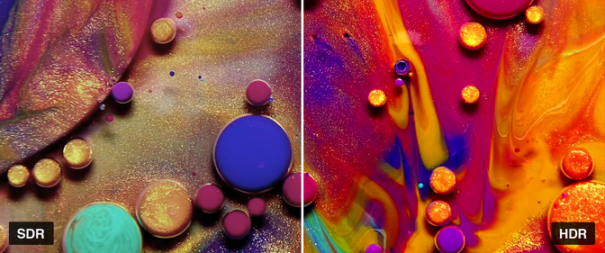
¿Se puede mezclar material SDR con HDR?
Son muchas las productoras y cadenas de televisión que tienen multitud de horas de archivo codificado en SDR y que ahora se encuentran que deben combinarlo con material nuevo en un proyecto en HDR. Y algunas de las preguntas que habitualmente se generan son: “¿Primero se debe realizar el máster en SDR y posteriormente la versión HDR o al revés?”, o “¿Es posible combinar estas dos tipologías de señal?”.
El grupo de postproducción de la UHD Spain ha hecho estas preguntas a una serie de coloristas especializados y, a partir de su experiencia, se puede concluir que las mejores prácticas para tener dos versiones del mismo producto, una SDR y otra HDR, consiste en realizar primeramente un master HDR y posteriormente generar una versión SDR, mediante el cambio de la ODT (Output Device Transform) en el caso de que se trabaje en ACES, o en aquellos casos que lo requieran, se puede realizar un Trim Pass a SDR mediante las herramientas de ajuste que ofrecen los programas de corrección de color.
Cuando lo que se requiere es generar un master en HDR que incluye material, por ejemplo de archivo, que está codificado en SDR, el proceso no debe sufrir ningún tratamiento especial. Hay que indicar mediante una IDT (Input Device Transform) al software de postproducción que el material proviene de un espacio de color ITU BT.601 o ITU- BT.709, y posteriormente tratarlo como si fuera grabado en HDR. Lo que sí que es altamente recomendable es, que en la medida de lo posible, se evite utilizar imágenes SDR que tengan los blancos “recortados”, ya que no se puede recuperar una señal que no existe.
 Limitaciones y oportunidades
Limitaciones y oportunidades
Debido a la naturaleza destructiva de las LUT, no se recomienda su utilización en entornos creativos de corrección de color. Aun así, la experiencia demuestra que algunas de las soluciones que hay en el mercado capaces de realizar conversiones técnicas de SDR a HDR y viceversa, son muy satisfactorias. Eso si, habrá que tener precaución con pequeños detalles como grafismos, moscas, todo ese material que se sobre-impresiona y habrá que evaluar como tratar la diversidad de contenidos para ajustarlas a la emisión final.
Una de las principales limitaciones que tienen las operadoras de televisión es que, si emiten contenido HDR por su canal tradicional, lo deben hacer con un sistema retrocompatible con el SDR, ya que el parque de receptores no está totalmente adaptado a la UHD. La mejor alternativa seria realizar un simulcast en SDR y HDR, pero la disponibilidad de espectro radioeléctrico no lo permite. Por esta razón en España, la mayoría de difusores de contenidos en UHD, son las plataformas que distribuyen por internet. La disponibilidad de ancho de banda, la posibilidad de adaptar la calidad de la señal a cada usuario, así como la flexibilidad de implementar nuevos codecs, ofrecen unas claras ventajas respecto los canales tradicionales de difusión, que no dejan indiferentes a las operadoras de televisión. Aun así, habrá que ver que recorrido pueden tener soluciones como el 5G o el DVB-I.
Xavier Bonet
Realización en TV3, coordinador del grupo de postproducción de UHD Spain y responsable del departamento de tecnología de la ESCAC
Did you like this article?
Subscribe to our NEWSLETTER and you won't miss anything.



